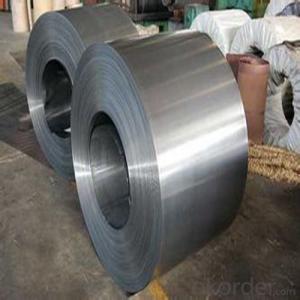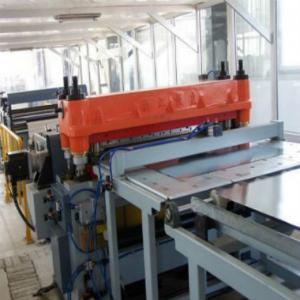Electrolytic Tinplate Sheets or Coils for Industrial Package 0.345mm
- Loading Port:
- Shanghai
- Payment Terms:
- TT OR LC
- Min Order Qty:
- 50 m.t.
- Supply Capability:
- 12000 m.t./month
OKorder Service Pledge
OKorder Financial Service
You Might Also Like
Electrolytic Tinplate
The origin of tinplate is from Bohemian, from 14th century, the people there began to produce tinplate. Also known as electrolytic tinplate, which stand for tin coating on the surface of cold rolled coil for preventing rust. The unique characteristics of tinplate steel decides its comprehensive range of application in international tinplate packaging industry. With the abundance extend of CC and DR steel material, and tin free steel, which enhance the development of technology of packaging industrialization, the innovation is ubiquitous in tinplate steel.
The feature of anti-oxidation, various kinds and beauty in printing enable tinplate enjoys widely usage in food can package, pharmaceutical package, daily application packing, apparatus package and industrial pack.
From the first food can to be produced in the year of 1810 in British, the development trend of tinplate has become thinner thickness and less tin coating to adjust the change of can industry and save cost.
Specification of Electrolytic Tinplate Sheets or Coils for Industrial Package 0.345mm:
Standard: ISO 11949 -1995
Material: SPCC
Thickness:0.345mm
Width: 600mm -1150mm
Temper: T3
Annealing: BA
Coil Inner Diameter: 508mm
Weight: 6-10 tons/coil 1~1.7 tons/sheets bundle
Passivation:311
Oil: DOS
Surface: Finish,bright,stone,matte,silver



Frequently Asked Questions:
- What is the delivery time for your prime quality tinplate?
Usually 45 days after order confirmation for MR steel, and 35 days for SPCC.
- Do you also offer secondary quality stock tinplate?
Yes, we also offer secondary quality stock tinplate especially for industrial use.
- Can you offer some details about your package?
For sheets: plastic or waterproof paper, metallic cover and angles, steel strips,wooden pallet.
For Coils: plastic or waterproof paper,plastic protect plate,steel strips.
- Which port do you ship from?
We can ship from any China main port, but mostly Shanghai.
- What is the payment term?
The most common we use is L/C at sight or TT. We can also try use other terms.
- Q: What are the common defects found in tinplate packaging?
- The common defects found in tinplate packaging include dents, scratches, rust, improper sealing, and printing errors.
- Q: What are the advantages of using tinplate?
- Some of the advantages of using tinplate include its high strength and durability, excellent corrosion resistance, and its ability to be easily formed and shaped. Tinplate also provides a barrier against oxygen, moisture, and light, making it ideal for packaging food and beverages. Additionally, tinplate is recyclable, making it a sustainable choice for packaging materials.
- Q: What are the different types of tinplate finishes available?
- Some of the different types of tinplate finishes available include bright, matte, and stone finishes.
- Q: What are the weight advantages of using tinplate?
- One of the weight advantages of using tinplate is its lightweight nature. Tinplate is made of thin sheets of steel coated with a layer of tin, which makes it lighter compared to other metal packaging materials. This lightweight feature allows for easier transportation, storage, and handling, reducing overall costs and increasing efficiency in various industries.
- Q: What are the welding methods used for tinplate?
- The welding methods commonly used for tinplate include spot welding, resistance welding, and laser welding.
- Q: How does tinplate compare to glass in terms of packaging applications?
- Tinplate is often preferred over glass for packaging applications due to its durability, lightweight nature, and cost-effectiveness. Unlike glass, tinplate is not prone to breakage, making it safer for shipping and handling. It also offers excellent barrier properties, protecting the contents from air, moisture, and light. Additionally, tinplate is recyclable and has a lower carbon footprint compared to glass, making it a more sustainable choice for packaging.
- Q: What are the different types of tinplate seams?
- There are three main types of tinplate seams: lap seam, double seam, and open seam.
- Q: What are the benefits of using tinplate for electrical components?
- Tinplate offers numerous benefits for electrical components. Firstly, it provides excellent corrosion resistance, ensuring the longevity and durability of the components. Secondly, tinplate has excellent solderability, making it easier to connect and assemble electrical circuits. Additionally, tinplate is a good conductor of electricity, allowing for efficient flow of electrical currents. Lastly, it is a cost-effective option, as tinplate is readily available and relatively inexpensive compared to other materials.
- Q: How is tinplate tested for quality assurance?
- Tinplate is tested for quality assurance through various methods including visual inspection, chemical analysis, mechanical testing, and coating thickness measurement.
- Q: How does tinplate contribute to the shelf life of beverages?
- Tinplate contributes to the shelf life of beverages by providing a protective barrier against light, oxygen, and moisture, which helps to prevent oxidation and spoilage. This ensures that the beverage retains its quality, taste, and freshness for a longer period of time. Additionally, tinplate cans also have excellent sealing properties, further reducing the risk of contamination and extending the shelf life of beverages.
Send your message to us
Electrolytic Tinplate Sheets or Coils for Industrial Package 0.345mm
- Loading Port:
- Shanghai
- Payment Terms:
- TT OR LC
- Min Order Qty:
- 50 m.t.
- Supply Capability:
- 12000 m.t./month
OKorder Service Pledge
OKorder Financial Service
Similar products
Hot products
Hot Searches
Related keywords




























